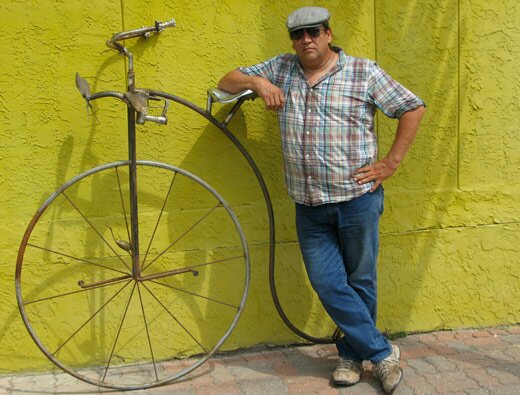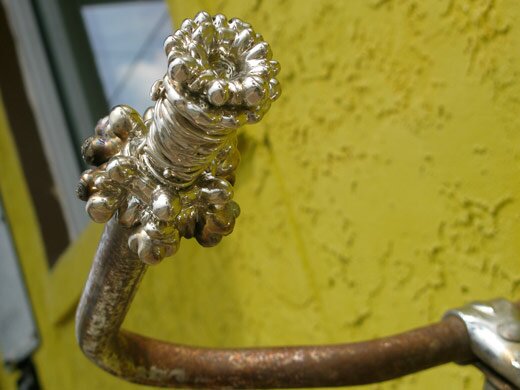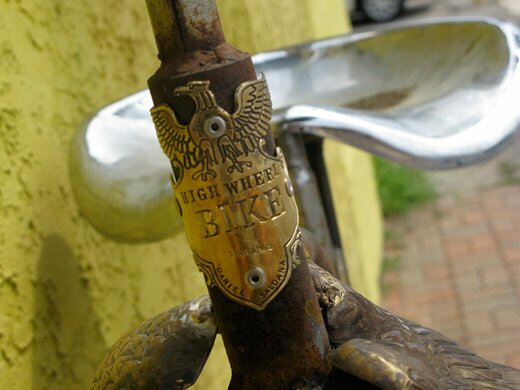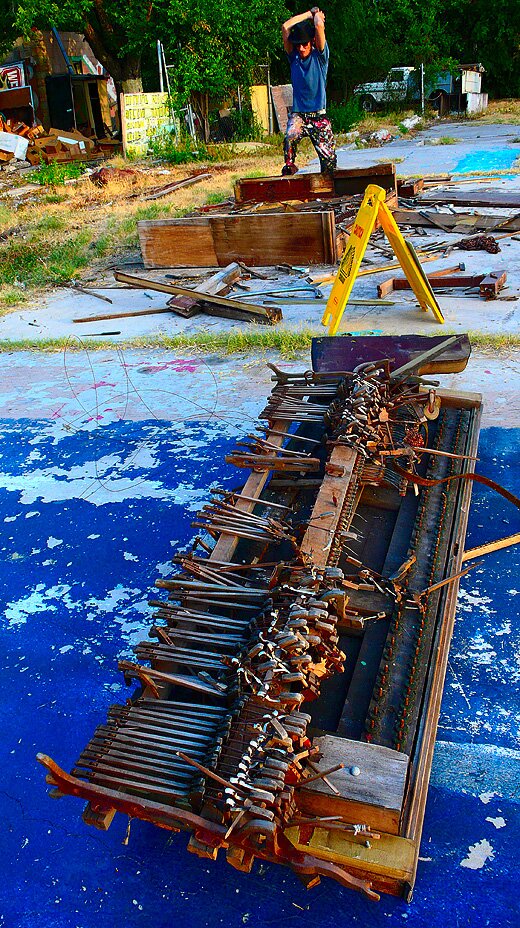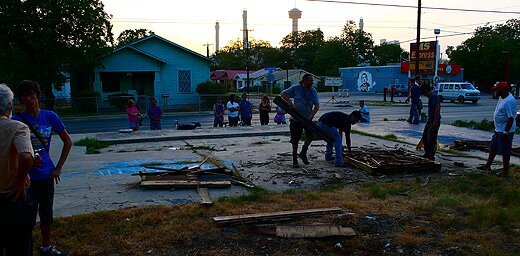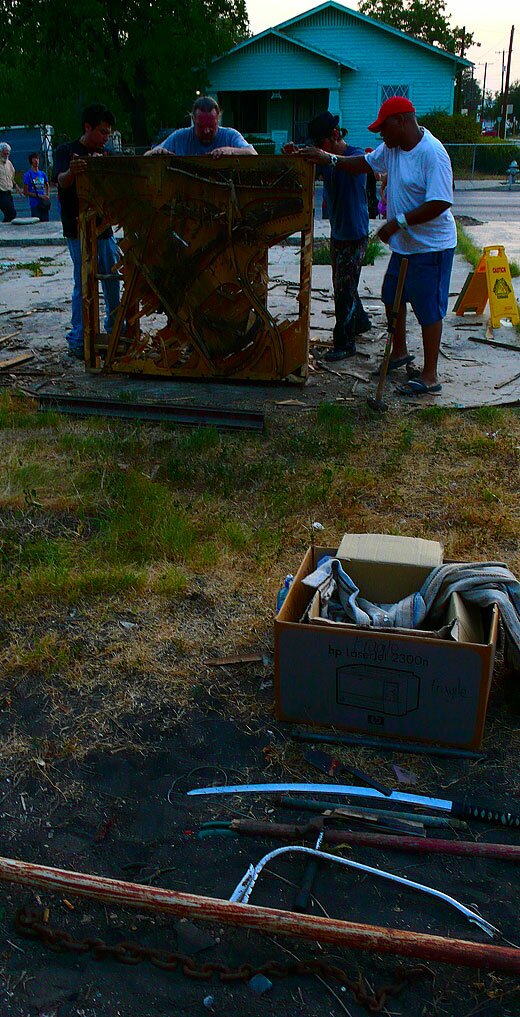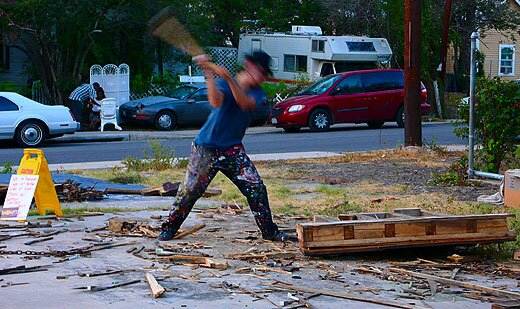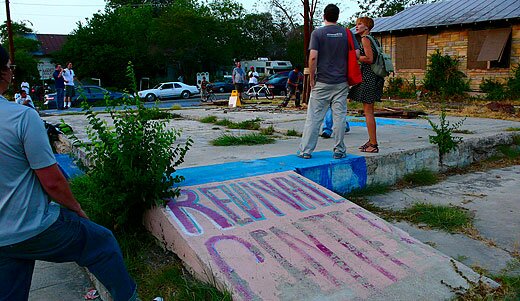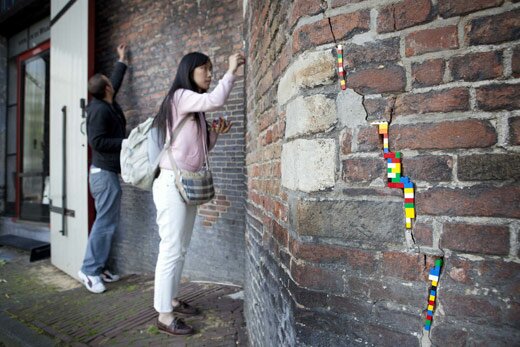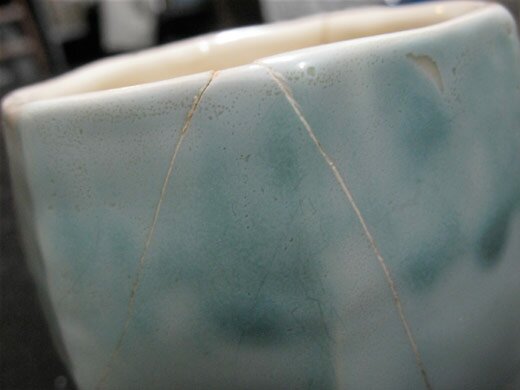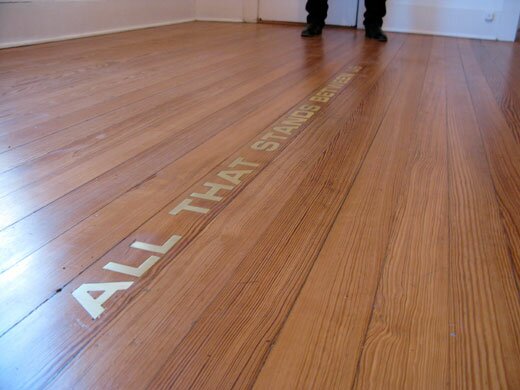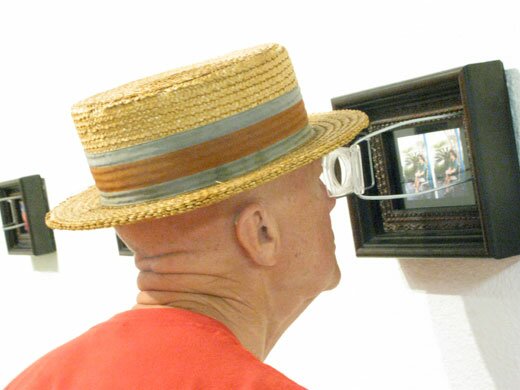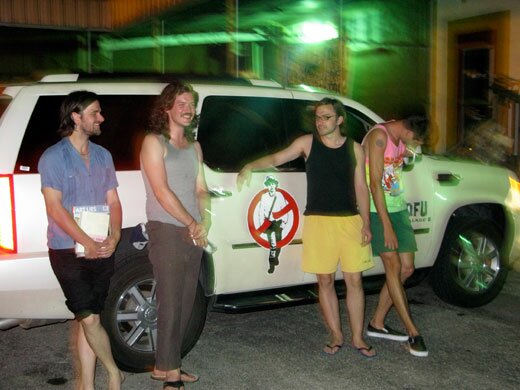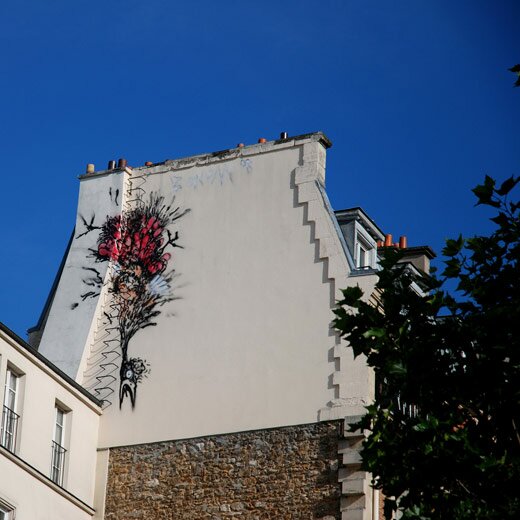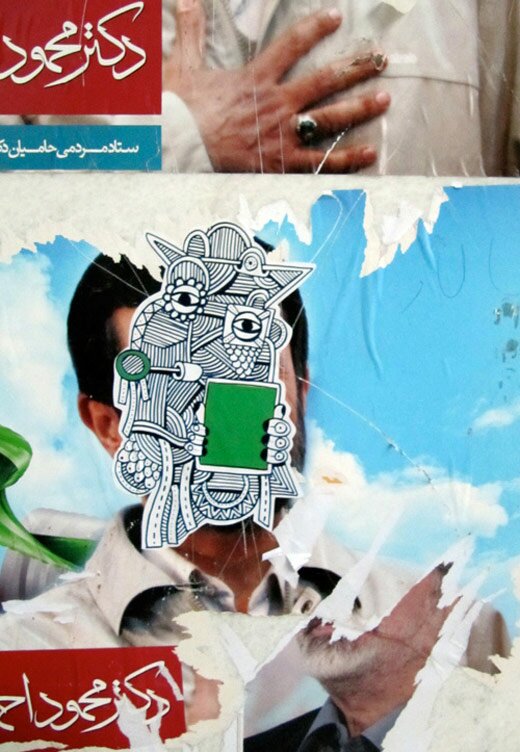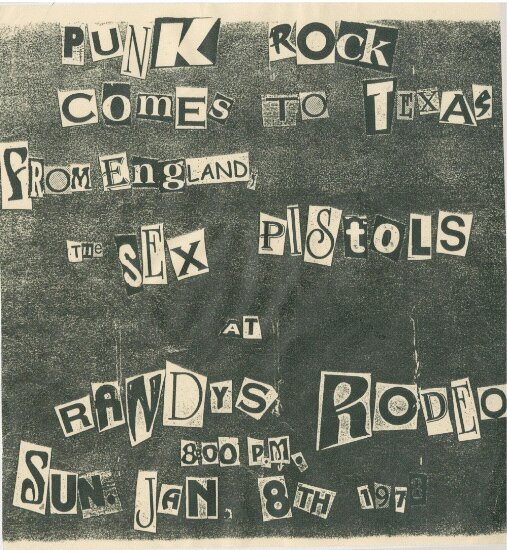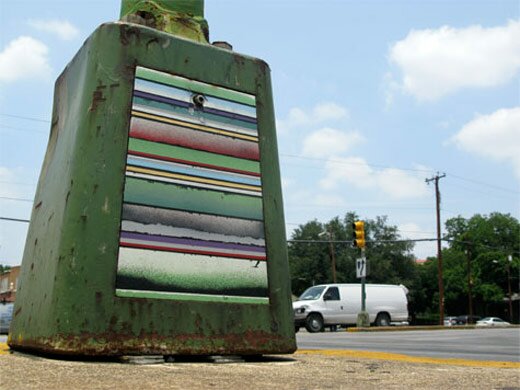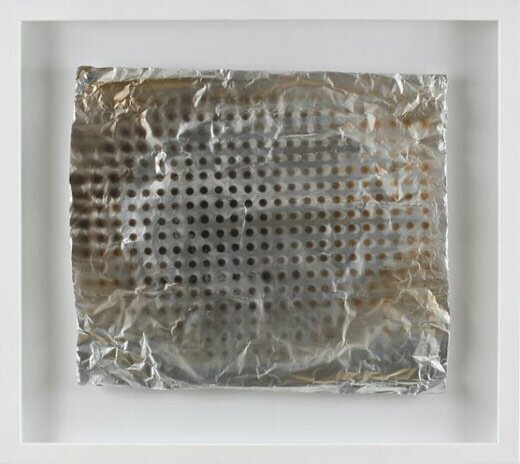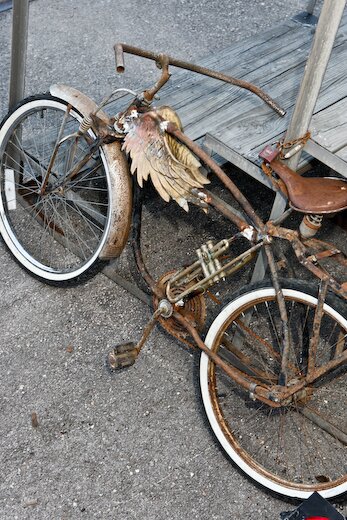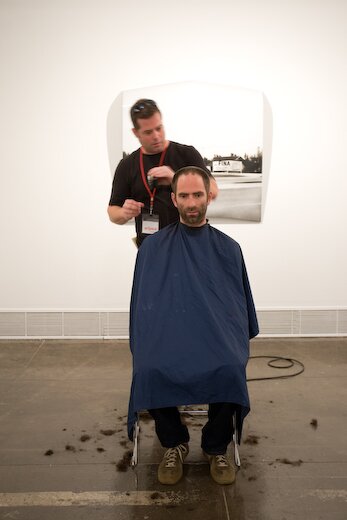Potter-Belmar Labs interviews Franco Mondini-Ruiz
May 22, 2009, San Antonio TX

Years ago, Franco Mondini-Ruiz quit a high-paying job in law, paid off his bills, took an extended self-desribed rite-of-passage-trip into Mexico, and then opened his infamous salon and art installation, the Botanica Infinito, on Flores Street in his hometown of San Antonio. With this was launched an art career that took him all over the world, moving to New York City, contributing to the 2000 Whitney Biennial, winning the Rome Prize, lunching with the Queen of Egypt, and certainly much more.
A decade later, in 2006, San Antonio’s glamorously irreverent bad boy returned home to roost, establishing a lush and bountiful hacienda pregnant with beauty, poetry and art. Faint echos of the Warhol Factory hang in the air with a swirl of beautiful assistants, dangerous pleasures, and wild, opulent parties, all in the service of and made possible through Mondini-Ruiz’ art making practice.
The son of an upper-middle class Italian Air Force man and a Spanish/Mexican beauty, Mondini-Ruiz is known by many as a generous, yet social boundary-pushing, provocateur. He has both struggled through and reveled in the myriad contradictions of class, culture, and ethnicity that infuse and enrich his life. A model hybrid who lives the reality of being “not quite one nor the other,” he owns the differences, fuses them together and enshrines them within his art.
Potter-Belmar Labs interviewed Franco Mondini-Ruiz at his west side domicile, in the bedroom he claims to have been his great grandmother’s.
[This interview is part of a three-part series. Read Potter-Belmar Labs interview with ArtPace Director, Matthew Drutt, also on Emvergeoning.]

Emvergeoning: Tell us a little about the Botanica Infinito.
Franco Mondini-Ruiz: The Botanica was a readymade when I bought it. It was a pre-existing botanica and it had inventory all the way from the 60’s. Beautiful place. It was called Infinito Botanica, and underneath, it said “Amor, Dinero, y Paz y Tiempo de Gozarlo,” in my very best Spanish, which I think means “Love, Money, and Peace, and Time to Enjoy It.” Unfortunately, some architects bought the building — friends of mine whose names will go unmentioned — and they painted out that gorgeous little mural, which was featured in the Whitney Biennial catalog.
Emvergeoning: How does being from Texas affect your work?
More specifically than being from Texas, I have made a living being an artist from San Antonio. Texas scares people ’cause there’s, you know, they think of Bush, they think of wealth. They’re fascinated by it. They’re interested in it. But San Antonio is very intriguing to a lot of people all over the world. There’s enough mystery to it that people are intrigued. I really have made a career of it, and I don’t mean that facetiously or to be cavalier. A lot of us from San Antonio, who either were born here or moved here, we love it. It’s the love of my life, and it even breaks my heart, sometimes.
I have to watch out and not over-romanticize it, and not to just say, “oh, because San Antonio is part of me, I want to build it up.” I’m haunted by the sense of place here. I mean, my father’s from Rome, an ancient city with millions of layers. San Antonio can’t compare, perhaps, with that– or maybe it can. San Antonio probably has older indigenous populations even than Rome does. You know, San Pedro Springs is one of the oldest continually-used centers of human inhabitation in the world.
Something intrigues me here, as a metaphor for a lot of things that I’m interested in and love, like cultural hybridity, class, industrialization versus agricultural society, castas, history, cosmopolitanism.
Emvergeoning: You’ve described San Antonio as your muse. How can a city be a muse?
I love it. It makes me create. It inspires me, and stimulates me. Turns me on, like a muse. It happens every two minutes! And it might be so subtle, like: Leslie [Raymond, of PBL] came over today, and she had her first menudo. She sucked it down like her body needed that. And it’s fascinating, that here she is, sophisticated, but she comes to the west side of San Antonio, and she’s eating this ancient food. I mean, when you’re eating a tripe soup, you’re eating like an ancient Roman. And here it is, just a few blocks away in a poor neighborhood in San Antonio.

It’s a mixture of high and low culture that doesn’t stop. And while Leslie is eating the menudo, you know, this gorgeous guy covered in San Antonio iconography all over his gorgeous body is rolling a blunt, while his sister is serving us delicious dishes of food, while this white cowboy is painting the most delicate paintings and had just made this huge flower arrangement for me, and Carlitos is turning my little yard in the middle of one of the poorest neighborhoods in the poorest cities of the United States into Versailles, with the last few pennies I have in the bank! I love it! [laughs]
And it’s like that every minute, if you let it! With the slightest nurturing, with the slightest investment. It’s like all those cactus in front: they need so little, and they bloom so exquisitely.
Continue Reading »
22 Comments »
